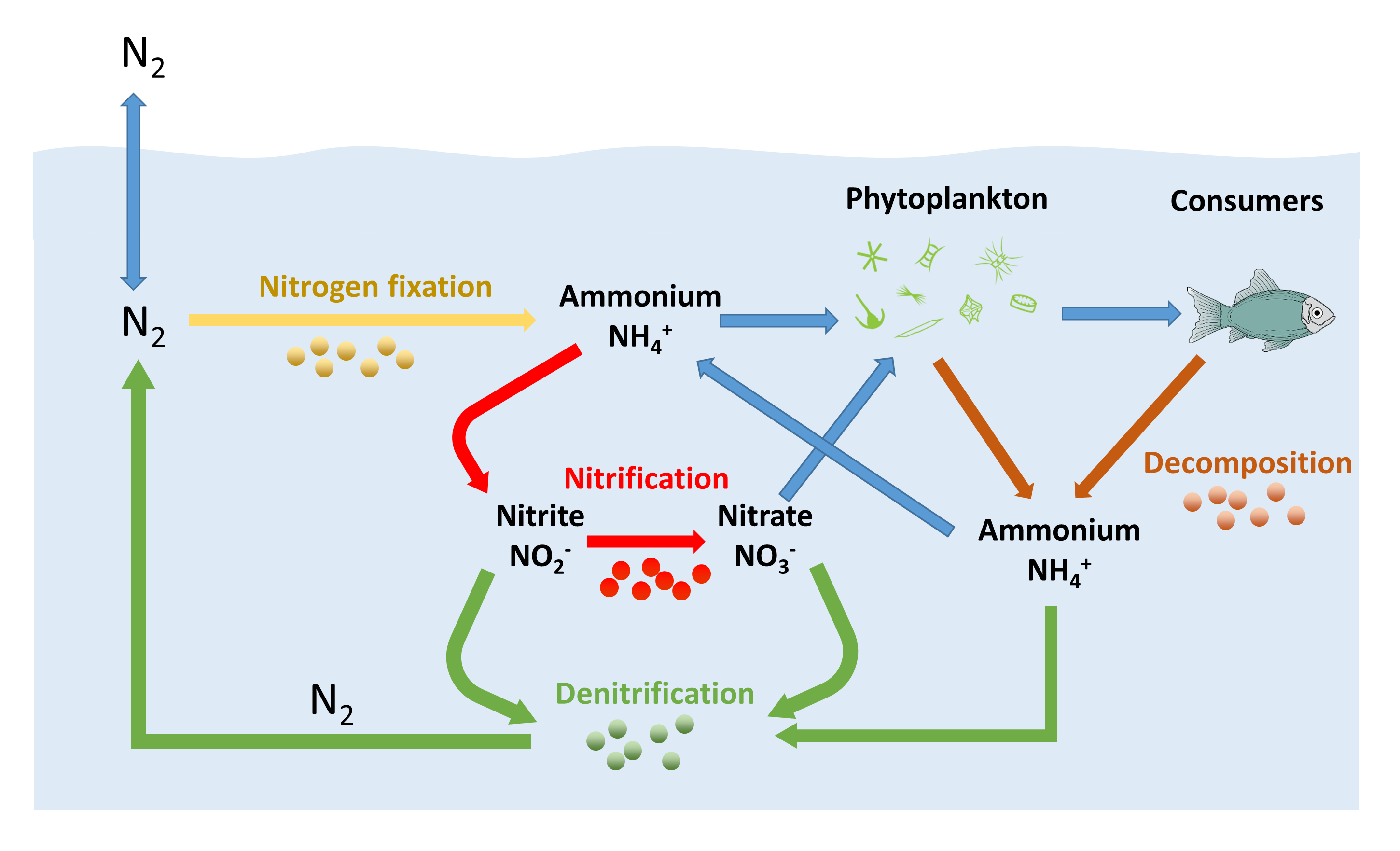
5.6 Nitrogen and Nutrients Introduction to Oceanography
Animals secure their nitrogen (and all other) compounds from plants (or animals that have fed on plants). Figure 17.2.2.1 Nitrogen cycle. Four processes participate in the cycling of nitrogen through the biosphere: (1) nitrogen fixation, (2) decay, (3) nitrification, and (4) denitrification. Microorganisms play major roles in all four of these.

Nitrogen cycle Steps of Nitrogen cycle Online Biology Notes
. Nitrogen exists in the atmosphere as N 2 gas. In nitrogen fixation, bacteria convert N 2 into ammonia, a form of nitrogen usable by plants. When animals eat the plants, they acquire usable nitrogen compounds. Nitrogen is a common limiting nutrient in nature, and agriculture.

Tom's Marine Biology A block Diagram of Nitrogen Cycle
The nitrogen cycle is the cyclic movement of nitrogen in different chemical forms between living organisms and the environment. The steps of the nitrogen cycle are described below. Nitrogen fixation: During this step, atmospheric nitrogen gas is fixed, or converted into a form that can be used by plants and animals.

Nitrogen Cycle QCE Biology Revision
Understanding Nitrogen Cycle with a Diagram Similar to other biogeochemical cycles, the nitrogen cycle is essential for regulating the concentration of nitrogen in the atmosphere. Read on to know more about this cycle through the diagram given below, which will help you in understanding the sequence of steps involved in this cycle.
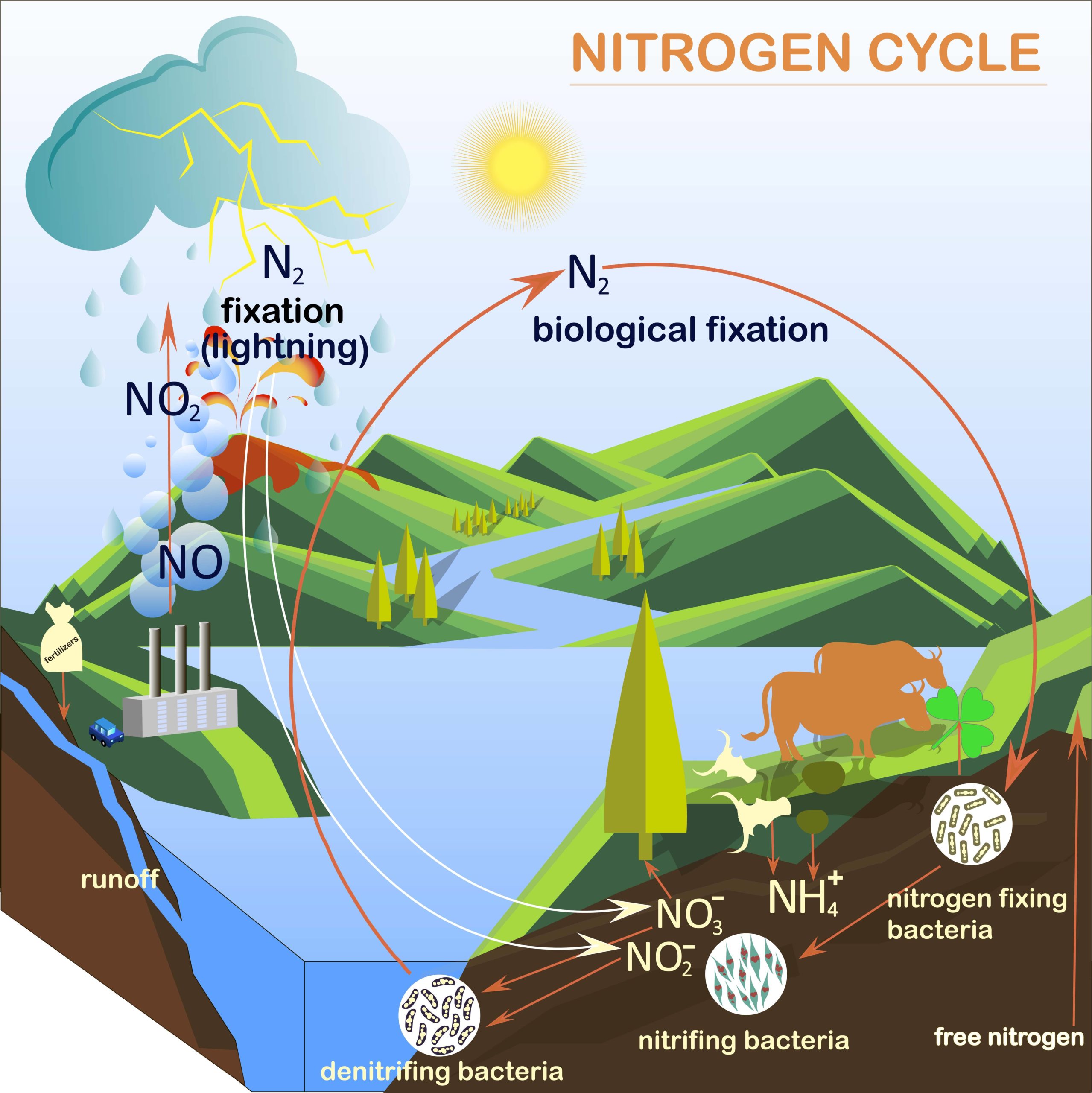
What is the Nitrogen Cycle? Science for Kids
The nitrogen cycle — Science Learning Hub Article The nitrogen cycle Resource Related topics & concepts Add to collection Nitrogen is the most abundant element in our planet's atmosphere. Approximately 78% of the atmosphere is made up of nitrogen gas (N 2). Topics Concepts Citizen science Teacher PLD Glossary Sign in Email Us
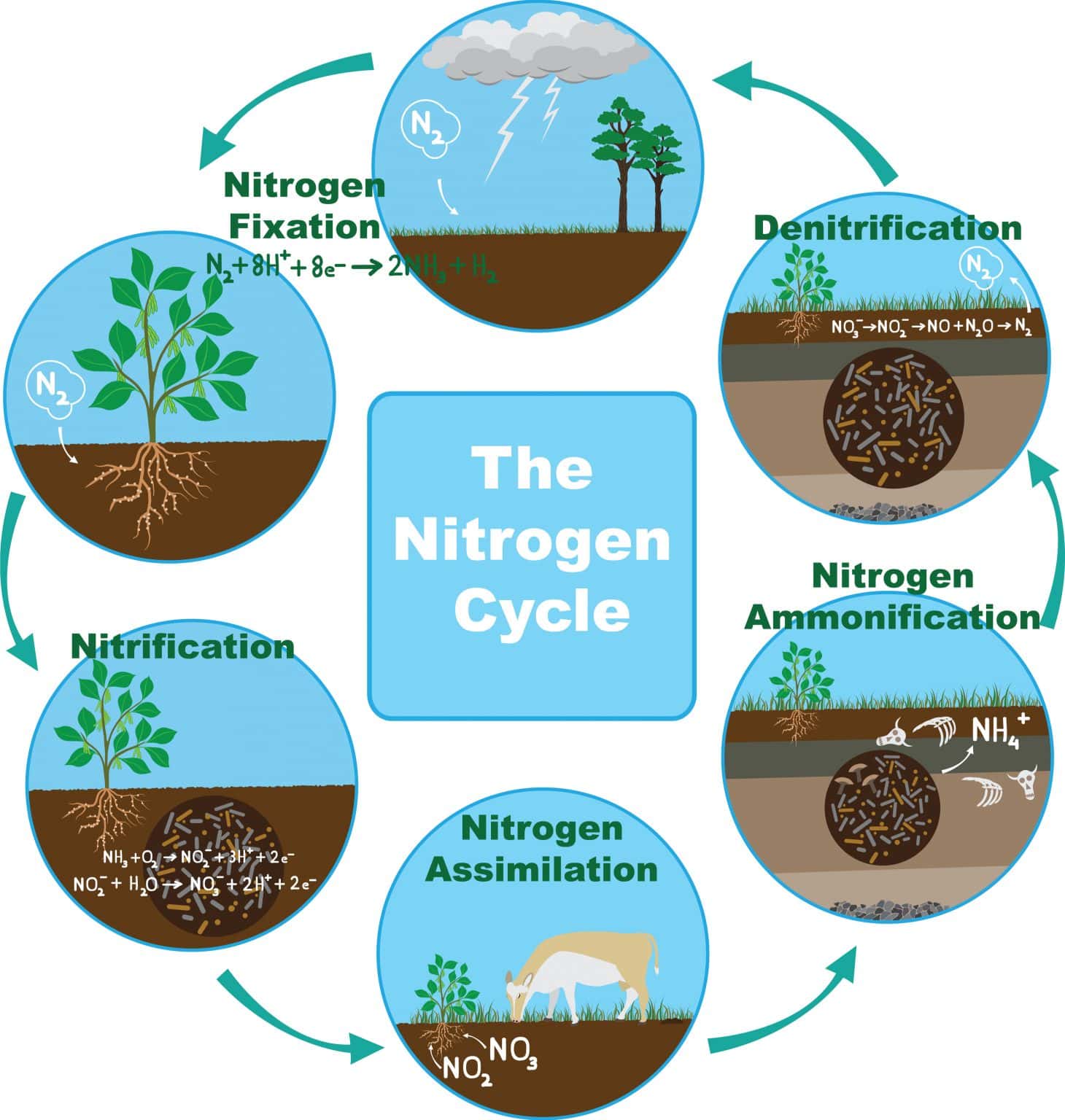
Understanding the Nitrogen Cycle Beginners Education AlgaeBarn
The nitrogen cycle is the biogeochemical cycle by which nitrogen is converted into multiple chemical forms as it circulates among atmospheric, terrestrial, and marine ecosystems. The conversion of nitrogen can be carried out through both biological and physical processes.
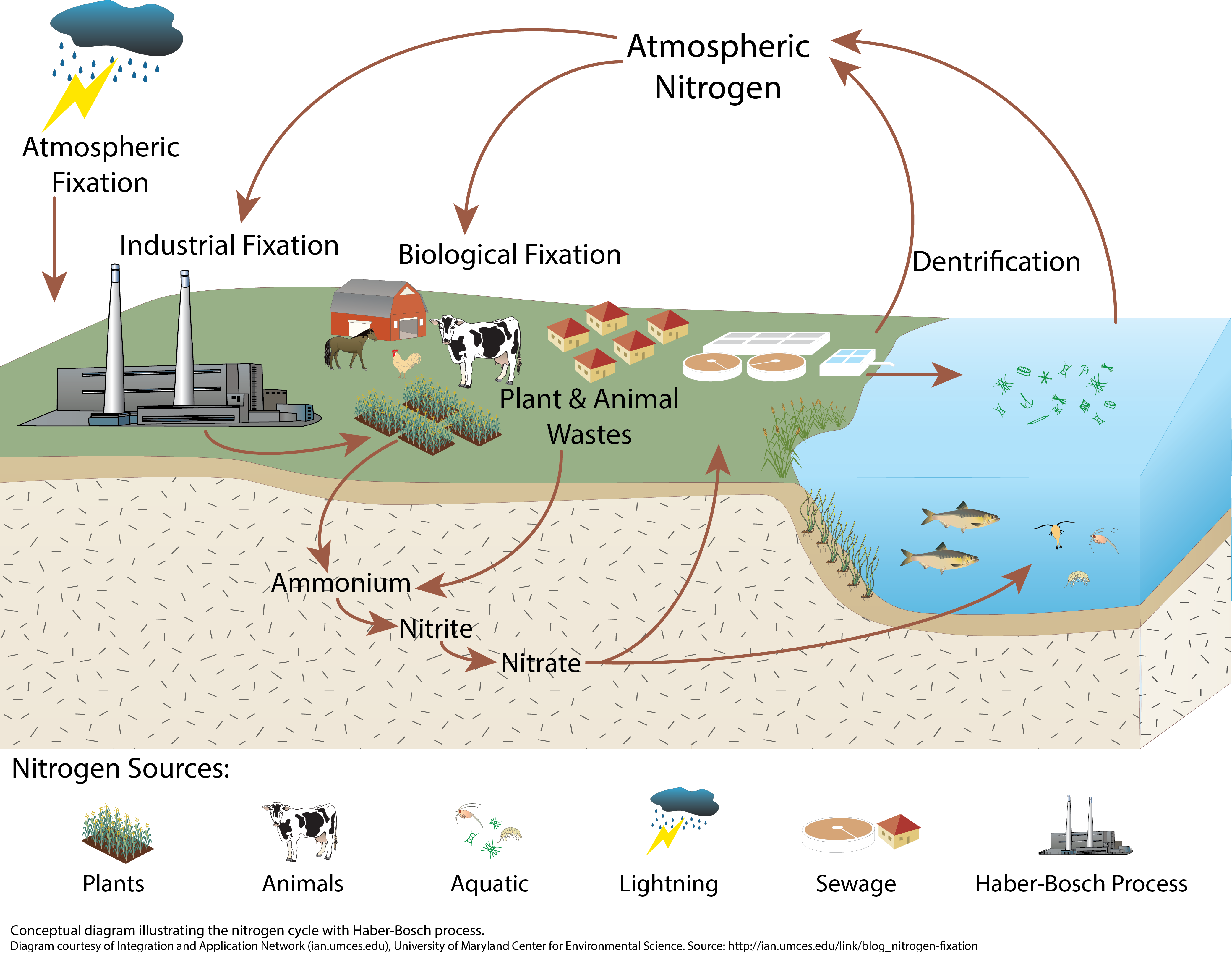
The nitrogen cycle with HaberBosch process Media Library
Definition The nitrogen cycle refers to the cycle of nitrogen atoms through the living and non-living systems of Earth. The nitrogen cycle is vital for life on Earth. Through the cycle, atmospheric nitrogen is converted to a form which plants can incorporate into new proteins. Nitrogen Cycle Explained
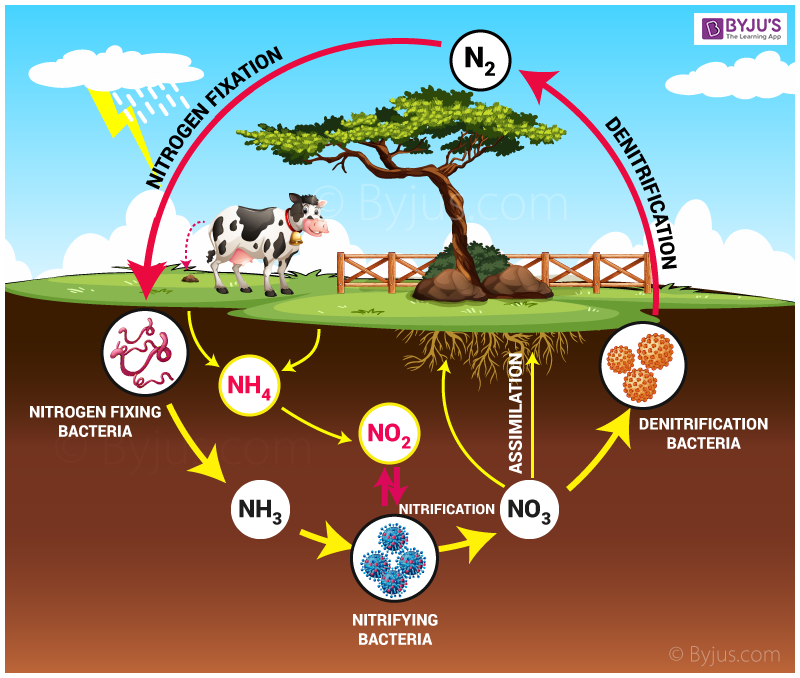
Nitrification and Denitrification In Nitrogen Cycle Differences
Nitrogen cycle diagram: The diagram at right outlines the main steps by which nitrogen is converted between its various chemical forms in the environment (click on the link beneath the diagram to enlarge it). Nitrogen occurs naturally in many chemical compounds, the simplest of which are nitrogen gas (N₂), ammonium (NH₄⁺), nitrite (NO₂.
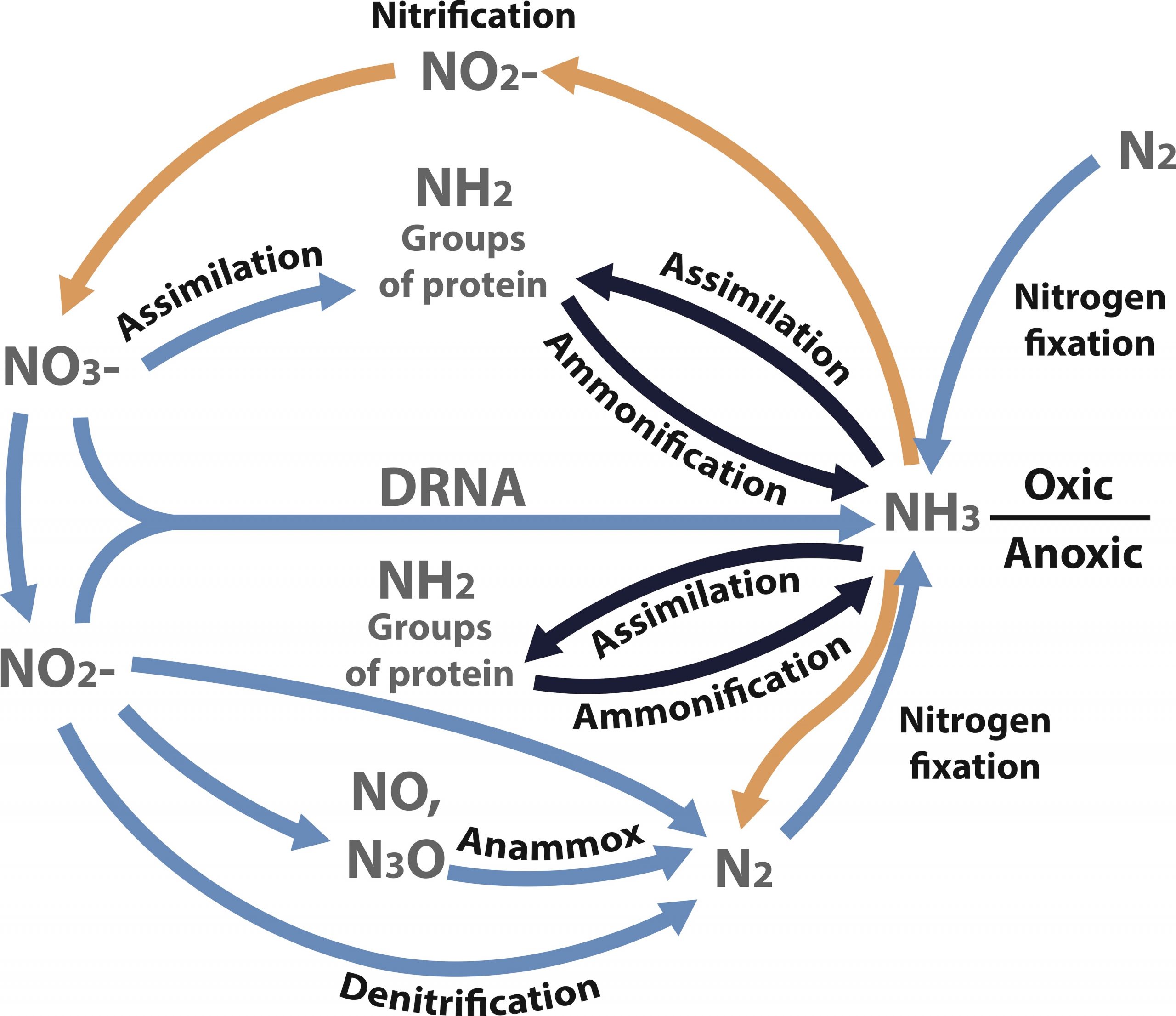
Understanding the Nitrogen Cycle Beginners Education AlgaeBarn
Nitrogen (N) is an essential component of , the building blocks of life. All require nitrogen to live and grow. Although the majority of the air we breathe is N, most of the nitrogen in the is unavailable for use by organisms.
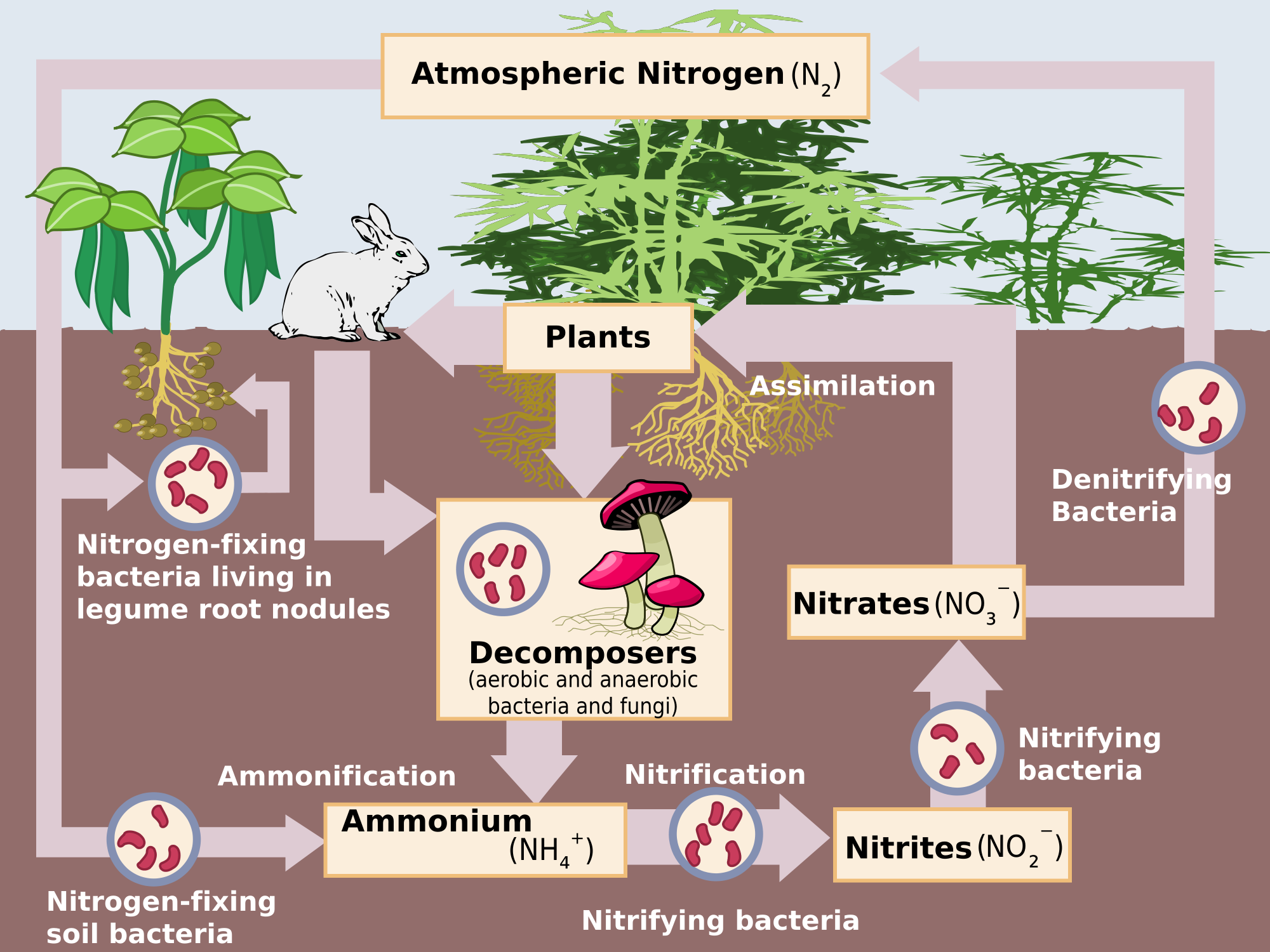
How does nitrogen cycle through the biosphere? Socratic
Nitrogen Cycle is a biogeochemical process through which nitrogen is converted into many forms, consecutively passing from the atmosphere to the soil to organism and back into the atmosphere. It involves several processes such as nitrogen fixation, nitrification, denitrification, decay and putrefaction.

How the Nitrogen Cycle Works Britannica
cycle to aid in reaching that goal. plant available N. Denitrification, volatilization, immobilization, and leaching result in permanent or temporary N losses from the root zone. Read on for specifics about each of the N cycle processes. Fixation refers to the conversion of atmospheric N to a plant available form.

301 Moved Permanently
Detailed Description This diagram of the nitrogen cycle shows were in the cycle antibiotics could impact the ability of denitrifying bacteria to process nitrates and nitrites in groundwater. The diagram is a modified version of figure 9 from USGS SIR 2004-5144, page 16. This study was funded by the USGS's Toxic Substances Hydrology Program.
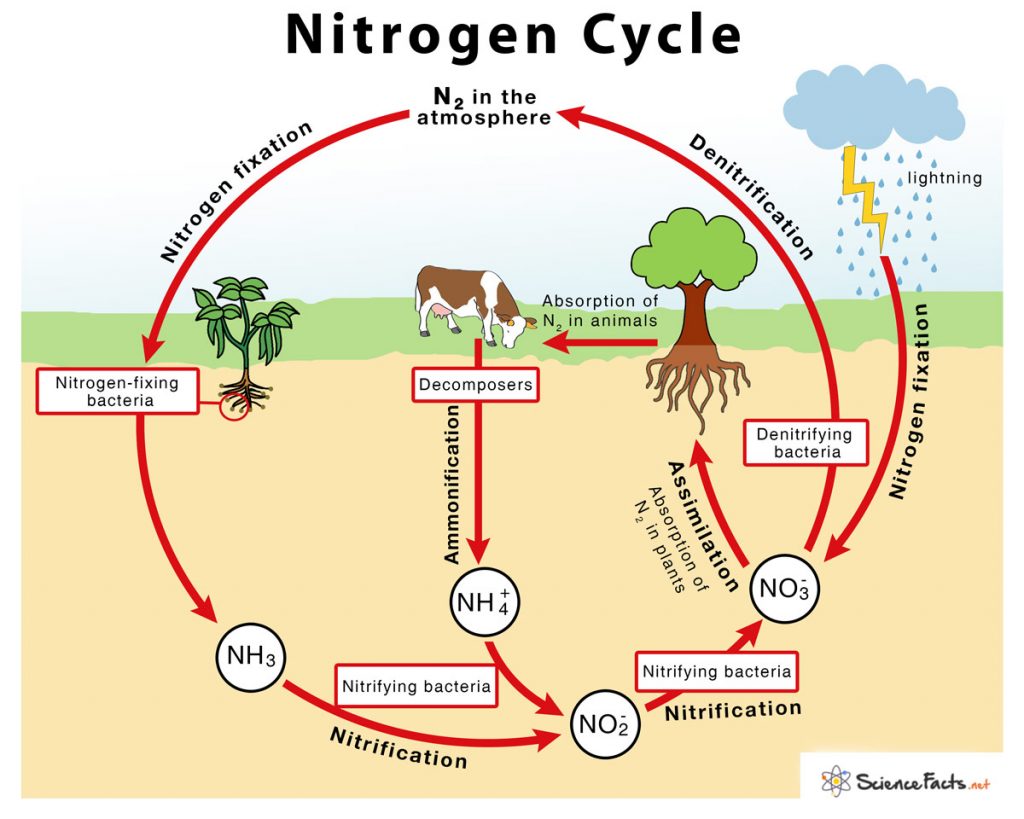
Nitrogen Cycle Definition, Steps, Importance with Diagram
Table of Contents What are the stages of the nitrogen cycle? What are two ways humans impact the nitrogen cycle? What are the dangers of too much nitrogen? Facts about nitrogen The process by which nitrogen is converted from atmospheric molecular form to a form useful to living things is called the nitrogen cycle.
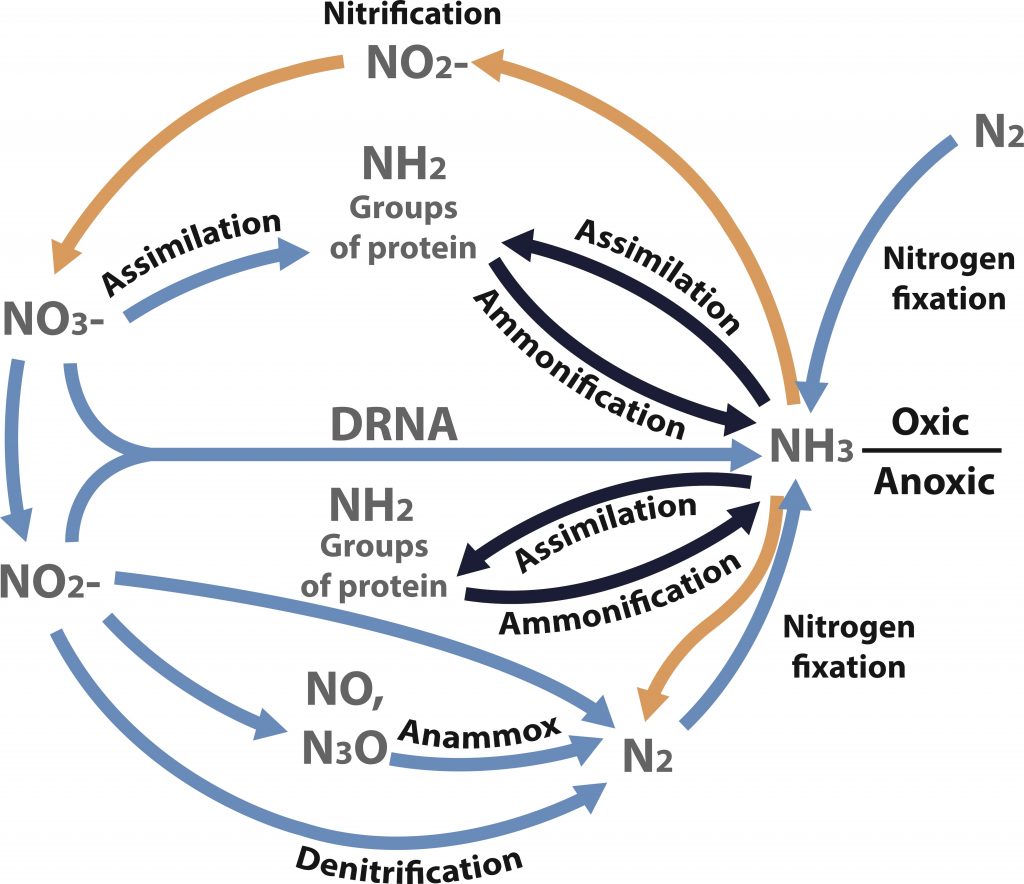
Understanding the Nitrogen Cycle Beginners Education AlgaeBarn
Diagram of the nitrogen cycle Processes in the Nitrogen Cycle Fixation - Fixation is the first step in the process of making nitrogen usable by plants. Here bacteria change nitrogen into ammonium. Nitrification - This is the process by which ammonium gets changed into nitrates by bacteria. Nitrates are what the plants can then absorb.
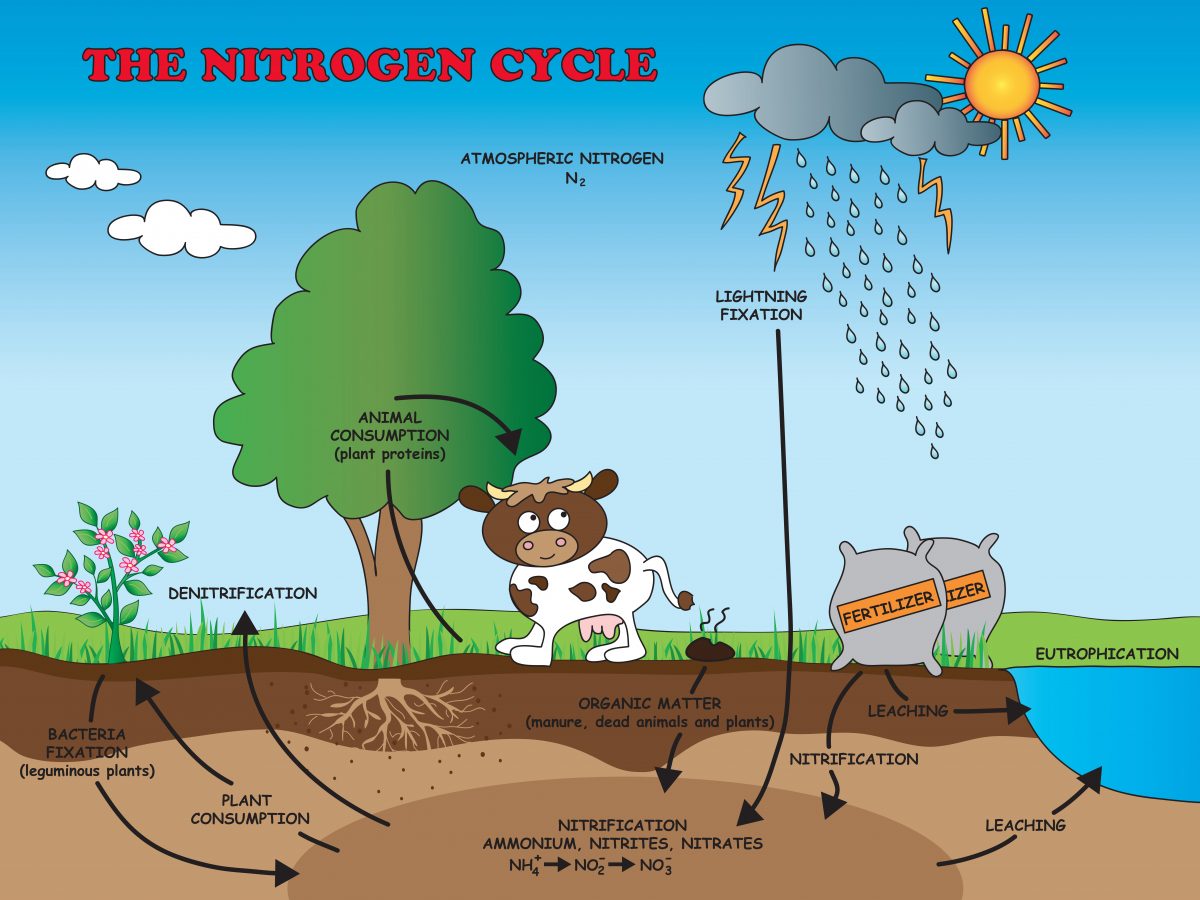
Nitrogen Cycle Facts for Kids (Explained!) Education site
The process of converting N 2 into biologically available nitrogen is called nitrogen fixation. N 2 gas is a very stable compound due to the strength of the triple bond between the nitrogen atoms.

Nitrogen Understanding Global Change
Nitrogen Cycle Diagram The entire process of the Nitrogen Cycle, one of the important biogeochemical cycle takes place in five stages: 1) Nitrogen Fixation by Bacteria - Converting inert atmospheric nitrogen (N 2 )into biologically available forms such as ammonia (NH 3 ), nitrates, or nitrites